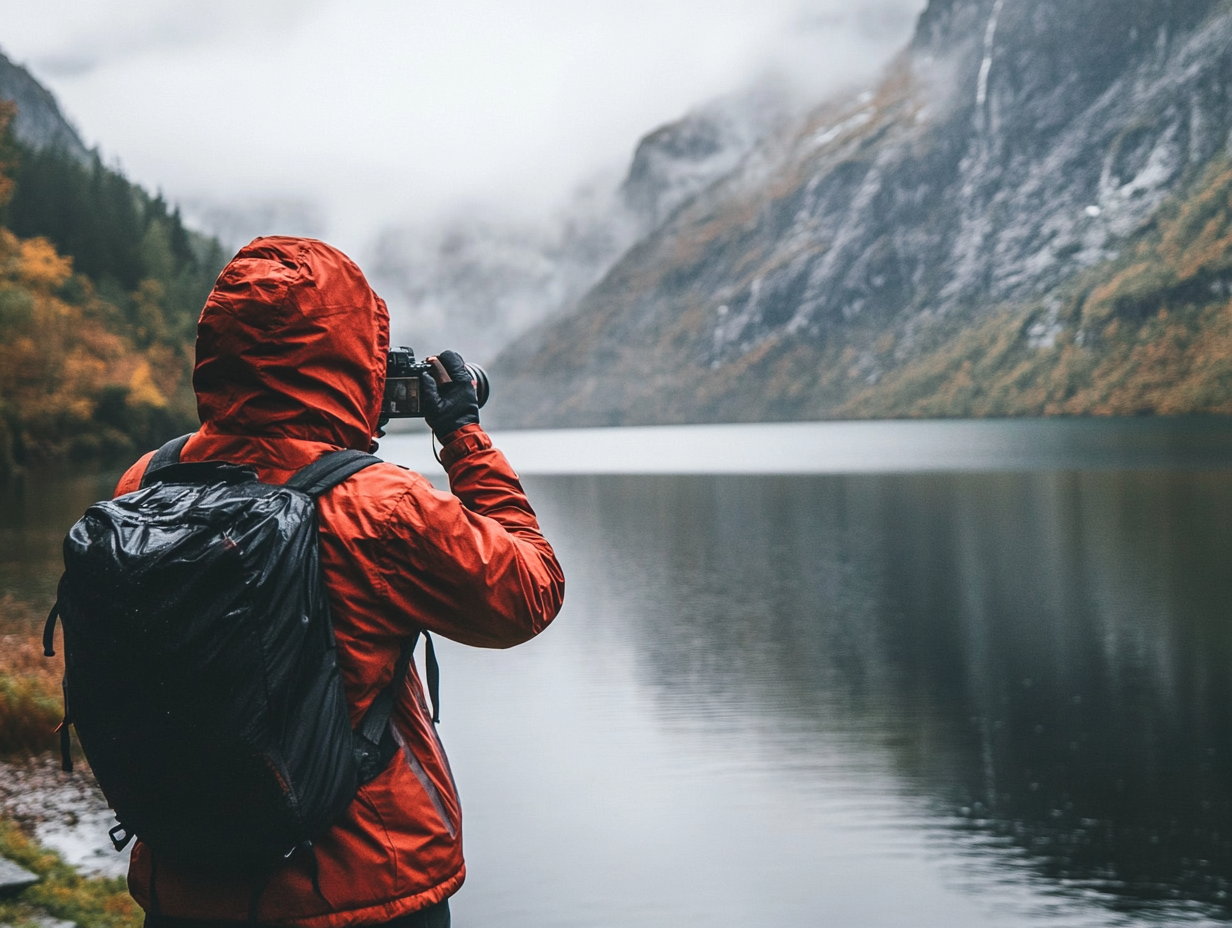Editor Picks
Sorry, Posts you requested could not be found...
latest posts
Plan your 2025 wildlife adventure with this curated list of the 10 best countries for spotting animals in their natural habitat—from polar bears in Canada to tigers in India and jaguars in Brazil.
There are places in the world where nature doesn’t simply appear—it arrives. With a sudden call in the treetops, a pawprint in the dust, or the briefest ripple through grassland, the presence of the wild is felt more than seen. If you’re seeking those rare corners of the globe where animals still roam without fences and ecosystems breathe without interruption, 2025 offers a generous itinerary. From the flooded veins of the Pantanal to the wind-brushed ice of Churchill, here are ten countries where wildlife encounters are not entertainment—they’re memory in motion.
1. Kenya – Where Earth Still Moves with Hooves
The Masai Mara remains one of Earth’s most visceral theatres, especially during the Great Migration. One moment, silence; the next, a sudden surge of hooves across golden plains. Further south, in Amboseli, elephant herds trace ancient paths under the watchful eye of Kilimanjaro’s snowy peak.
Watch for: Lion prides at dawn, elephants in silhouette, cheetahs trailing the wind.
2. India – Of Stripes, Shadows and Sacred Forests
India’s wilderness reveals itself slowly—through the rustle of bamboo, a ripple in tall grass, or the unmistakable gleam of a tiger’s eye. From Ranthambore to Kaziranga, this is not a single safari but a collection of ecosystems as varied as the country itself.
Watch for: Bengal tigers, Indian rhinos, snow leopards, sloth bears, and wild elephants.
3. Tanzania – The Cradle of Wild Time
The Serengeti doesn’t cater to spectacle—it is the spectacle. Thousands of animals move across its flatlands in a rhythm older than memory. Nearby, the Ngorongoro Crater acts as a natural amphitheatre, where wildlife converges on grasslands encased by volcanic walls.
Watch for: Giraffes on the ridge, black rhinos in the crater, and lions without hesitation.
4. Botswana – Where Water Draws the Wild
In Botswana’s Okavango Delta, water writes the script. One month, it’s dust; the next, it’s a mosaic of mirrored channels. The wildlife here adapts in real time—painted dogs leap between reeds, and elephants trace the floodplains like clockwork.
Watch for: Wild dogs on the move, hippos surfacing silently, and leopards at dusk.
5. Brazil – The Wetlands That Whisper
The Pantanal is Brazil’s quieter counterpart to the Amazon—and far more rewarding for wildlife seekers. You don’t chase sightings here; you wait, and they come. Jaguars linger by riverbanks. Capybaras cluster in reed beds. The entire ecosystem feels written in stillness.
Watch for: Jaguars in daylight, giant otters fishing, and hyacinth macaws flashing blue across the sky.
6. Sri Lanka – Leopards in the Brush, Whales at Sea
In Yala, leopards slip through tall grass with the nonchalance of kings. In Wilpattu, ancient lakes serve as mirrors for elephants and storks alike. And along the southern coast, blue whales glide through the Indian Ocean, almost unnoticed. Sri Lanka offers scale in intimacy.
Watch for: Leopards in the shadows, elephants near waterholes, and peacocks mid-dance.
7. Canada – In the Company of Ice and Silence
In Churchill, Manitoba, polar bears roam the tundra as if remembering a different age. During the fall, they gather near Hudson Bay’s edge, waiting for the sea to freeze. Come summer, the bears depart—and beluga whales arrive, tracing estuaries with graceful purpose.
Watch for: Polar bears on the move, Arctic foxes darting between rocks, and northern lights overhead.
8. Ecuador – Evolution in Real Time
Nowhere on Earth offers the unfiltered curiosity of the Galápagos Islands. Here, marine iguanas share rocks with blue-footed boobies, and sea lions swim past as if you weren’t there. The islands do not just show wildlife—they showcase what’s possible when nature writes the rules.
Watch for: Giant tortoises mid-meander, flightless cormorants, and penguins at the equator.
9. Madagascar – A World Apart, Entirely Its Own
Madagascar is less a destination and more an ecosystem on pause. Isolated for millennia, it holds creatures that exist nowhere else. Walk through Andasibe at dusk and you’ll hear the echoing call of the indri. Nothing about Madagascar feels borrowed. Everything is rare.
Watch for: Lemurs of every kind, colour-shifting chameleons, and the elusive fossa.
10. Australia – Wildness Between the Lines
Australia is often simplified into stereotypes, but its wildness is full of nuance. Kangaroo Island offers shelter to endangered marsupials, while the Daintree Rainforest breathes ancient air. Wildlife encounters here feel woven into the fabric of the land rather than placed upon it.
Watch for: Tree kangaroos above, echidnas below, and cassowaries in your periphery.
Wildlife travel isn’t about ticking boxes or chasing trophies—it’s about stepping quietly into places where nature still holds the pen. These ten countries don’t just offer wildlife—they require your stillness, your attention, and your willingness to observe rather than interrupt.
Experts say that travelling frequently can help improve memory retention and lower the risk of cognitive decline.
A trip to the mountains, the beach, or even the jungle is a great way to unwind. Essentially, travelling is a means of rejuvenation, no surprise there. When you take a hike to the waterfall you’ve always dreamed of, you’re not just checking off your bucket list, but packing memories that you might retell for years, vividly. And if travelling helps with boosting our memories, it’s a bonus, no?
You will agree that, of late, many people have reported experiencing increased forgetfulness – be it a missed birthday or misplaced keys. And if you go by what science says, travelling might just be the memory game you have been waiting for: fun, scenic, and secretly boosting your brain’s retention. Yes, travel can help improve your memory. It’s not a drill.
Making memories, boosting neurons
Travelling has the potential to benefit us both emotionally and cognitively. Experts believe that travelling is more like a workout. When you venture into unfamiliar settings, places where you can’t even pronounce the name of the dish that you are eating or the language you are speaking, your brain is forced to work harder.
As a result, when you try to remember things from the outing, you recall the different smells, sounds, conversations, and emotions tied to that moment. Relatable, right?
“This activity of travelling activates the creation of new dendrites, which are branch-like extensions of neurons. These enhance communication between different areas of the brain. As a result, travel supports key cognitive functions such as memory and attention,” says Dr. Avinash Gupta, consultant neurologist at Apollo Hospitals, Bilaspur.
The sensory and emotional stimulation adds to the lasting and vivid retention of memories, thanks to the hippocampus, our brain’s memory centre, which thrives on novelty. Even the hippocampus doesn’t enjoy boring routine tasks. When you’re exposed to something new and interesting, your brain lights up, takes note, and retains it better (hello, school textbooks).
That’s why you might not remember what you ate last weekend, but you do remember what you did on that trip to Ladakh.
One thing’s clear: travelogues help you recall every magical sunset moment. But here’s the fun twist, it can actually improve your everyday memory too!
Travel can aid in the retention of daily experiences. According to Dr. Gupta, a happy brain has a greater capacity to retain information. “Each trip can increase the brain’s retention capacity by 2–3 per cent, which is a substantial amount of additional information that we often don’t realise we’re capable of storing.”
Travelling creates “rich memory experiences” which are good for an ageing brain. Ms. Mehezabin Dordi, a clinical psychologist at Sir HN Reliance Foundation Hospital, Mumbai, agrees. She further explains how exploring new sights, learning about new cultures, eating new foods, or just navigating local transportation uses several regions of the brain, further lowering the risk of cognitive decline. “Such stimulation has the ability to create cognitive reserve, which is a shield against age-related decline. I have noticed in most of my senior clients that frequent travel makes them quicker, more intellectually agile, and even more psychologically stable.”
How much should you travel?
As much as you want! Till it suits your wallet and interests, of course.
According to experts, short holidays or weekend trips every three or four months can work just as long as the experience is novel and stimulating.
In fact, different types of travel affect the brain differently. Take nature-based travel like hiking, forest retreats, or beach vacations can help reduce stress and support mental clarity. On the other hand, cultural travel, which involves exploring new traditions, languages, or cuisines, can stimulate the brain and enhance creativity. Ultimately, the most beneficial journey is the one that resonates with your personal interests and needs.
Psst...time to pack and plan your next getaway because you now have expert-backed science to send to your boss!
Vacations are synonymous with sunshine, tan lines, and cerulean skies. But your favourite destinations unveil a whole new personality during monsoon season, coming alive with mist, clouds, thunder and tranquil rains. If summer vacations are the blockbuster hits everyone’s buzzing about, monsoon getaways are the indie films, intimate and atmospheric.
Monsoon vacations may not be mainstream, but they are full of quiet twists and calming moments. They offer what formulaic, high-octane summer blockbusters miss: a soulful depth.
Hari Ganapathy, Co-founder of Pickyourtrail, shared 5 international monsoon destinations, along with what you can see, do and eat there:
1. Bali, Indonesia
- Explore temples like Tanah Lot, enveloped in mist, or take a spiritual detour through a traditional Balinese purification ritual at Tirta Empul.
- Food here is monsoon comfort in a bowl, try babi guling (spiced roasted pig) or nasi campur, paired with warm jamur soup.
- Expect intermittent tropical showers that usually pass swiftly, leaving the air fragrant and the skies beautiful.
2. Chiang Mai, Thailand
- Known for its temples and tranquil charm, Chiang Mai becomes a green paradise during the monsoon months (June to October).
- Explore Doi Inthanon National Park at its greenest, where cloud forests and waterfalls like Wachirathan feel cinematic.
- Visit the striking Wat Phra That Doi Suthep temple in the rain; it’s an atmospheric experience.
- Adventure seekers can take on white water rafting in Mae Taeng or zip line through rain-soaked canopies.
- Indulge in khao soi, a rich curry noodle soup, or enjoy a sticky rice mango platter while taking shelter in a local market.
3. Hoi An, Vietnam
- UNESCO-listed old town, Hoi An, during its rainy season (typically September to January) turns beautiful.
- Try Cao Lau noodles or Banh Mi with a distinctly Hoi An twist.
- Try Vietnamese drip coffee.
- Stroll under umbrellas through lantern-lit streets, browse local tailor shops, and enjoy a boat ride on the Thu Bon River.
4. Highlands, Sri Lanka
- Sri Lanka’s central highlands, particularly Nuwara Eliya, Ella, and Kandy, look pretty during the monsoon months. The tea plantations, waterfalls, and lakes look more beautiful.
- The scenic train journey from Kandy to Ella is stunning, going through cloud forests and emerald slopes.
- Hike Little Adam’s Peak post-shower for panoramic views, or cosy up in a colonial-era bungalow with a fresh cup of Ceylon tea.
- Try a traditional Sri Lankan curry meal- kottu roti, hoppers with egg, or a rich crab curry.
5. Kyoto, Japan
- Kyoto’s monsoon season (June to mid-July) makes the scenery look calming.
- With fewer tourists, one can explore the bamboo groves of Arashiyama or take a quiet stroll through Gion’s narrow alleys without distraction.
- Visit the temples Sanzen-in and Mimuroto-ji, which have hydrangeas blooming in several shades across the temple grounds.
- Try warm bowls of udon, seasonal tempura, and matcha desserts, which are best enjoyed in a traditional ryokan.
- Join a tea ceremony in Kyoto.
At first glance, it seems obvious that Russia or the United States would dominate the time zone count, given their sheer size. But the rankings tell a more layered story, one shaped not just by continental spread, but by colonial history and the geographic sprawl of overseas territories. A country like France, which doesn’t even crack the top ten in landmass, ends up topping this list thanks to its reach across oceans and hemispheres. These time zone differences reflect not just geography, but the administrative reach of nations past and present.
How we compiled the list of countries with the most time zones
Here’s how the data was complied: This list uses data from Timeanddate, a trusted source for global timekeeping. It counts all official standard time zones used by a country, including those applied in overseas or outlying territories. Temporary changes such as daylight saving time are excluded, as are Antarctic claims. The tally reflects permanent UTC (Coordinated Universal Time) offsets currently in use by each country.
10 countries with the most time zones
France: 12 time zones
Despite its relatively modest size in Europe, France has territories scattered across the Pacific, Atlantic, Indian Ocean, and even South America. From the islands of French Polynesia (UTC−10) to Wallis and Futuna (UTC+12), France officially administers 12 different standard time zones, which is more than any other country in the world.
United States: 11 time zones
The US spans a large swathe of the planet, from Pacific islands like Wake and Guam to outlying islands in the Caribbean. Its domestic zones stretch from Eastern to Alaska Time, while remote possessions like Baker and Howland Islands operate on UTC−12. Together, they add up to 11.
Russia: 11 time zones
The largest country in the world by landmass, Russia stretches from the borders of Eastern Europe to the Bering Strait. It covers 11 time zones from UTC+2 in Kaliningrad to UTC+12 in Kamchatka, all across its contiguous mainland.
Australia: 9 time zones
Australia’s domestic timekeeping is already complex, but add external territories like Christmas Island, the Cocos Islands, and Lord Howe Island, and the total climbs to nine. Some regions even use unique half-hour or 45-minute offsets.
United Kingdom: 9 time zones
From the Pitcairn Islands in the Pacific (UTC−8) to the Chagos Archipelago in the Indian Ocean (UTC+6), the UK’s overseas territories are scattered widely. While mainland Britain uses UTC+0, these far-flung holdings bring its total to nine time zones.
Canada: 6 time zones
Canada’s vast geography spans six standard time zones, from Newfoundland Time (UTC−3:30) to Pacific Time (UTC−8). Each province and territory aligns with its own zone, with no overseas additions required to make the list.
Denmark: 5 time zones
Though geographically compact, Denmark’s jurisdiction includes the Faroe Islands and multiple time zones across Greenland. These Arctic and North Atlantic territories bump its total to five.
New Zealand: 5 time zones
Mainland New Zealand runs on UTC+12, but its reach extends to the Chatham Islands (UTC+12:45), as well as associated self-governing states like Niue and the Cook Islands. These collectively make for five time zones under New Zealand’s administration.
Brazil: 4 time zones
Brazil covers four time zones, from UTC−5 in the far-western Amazon regions to UTC−2 on its Atlantic islands. While all zones are confined to South America, the country’s continental breadth ensures a wide spread.
Mexico: 4 time zones
Mexico’s four official time zones span from UTC−8 in Baja California to UTC−5 in southeastern Quintana Roo. Though its range is narrower than others in this list, it still reflects the country’s east–west expanse.



